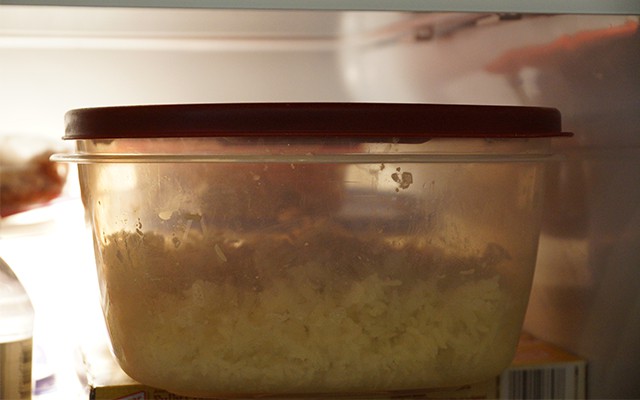Rice holds a significant place in the Vietnamese culinary culture and is a staple in every family meal. The process of cooking rice is typically straightforward but can sometimes require additional techniques and effort to achieve perfectly cooked, flavorful, and evenly distributed rice. Along with these considerations, it is equally important to be mindful of food preservation practices, particularly in preventing leftover rice from spoiling, especially during hot and sunny summer days. Discarding spoiled rice would be wasteful, as it is no longer suitable for consumption. However, by paying attention to the following factors, you can effectively avoid rice spoilage.
To ensure optimal food safety and quality, it is paramount to maintain a pristine condition of the rice cooker and its lid. Prior to cooking rice, it is imperative to thoroughly clean the rice cooker. The absence of proper cleaning may lead to the spoilage of rice, rendering it unfit for consumption.
Furthermore, when washing the rice, it is important to adopt different approaches based on its condition. In the case of moldy rice, a thorough wash is necessary, while fresh rice only requires a light rinse. These measures contribute to the overall cleanliness and freshness of the cooked rice, ensuring a delightful culinary experience.
Our ancestors discovered an effective method to prolong the shelf life of rice by incorporating a readily available household staple – salt. This technique involves adding a small quantity of salt during the rice washing process, as well as during its cooking. By doing so, the salt acts as a natural preservative, enhancing the taste and extending the longevity of the rice. Ultimately, this simple yet impactful approach ensures that the cooked rice remains flavorful and delectable for an extended period of time.

When preparing rice, it is recommended to add a small amount of salt to the water while washing it. This practice helps to enhance the longevity of the cooked rice. (Image: Internet)
After cooking the rice, it is advisable to let it remain in the rice cooker rather than removing it immediately. This is recommended in order to maintain its warmth and prevent bacterial contamination. When ready to consume, carefully remove the rice cooker lid and fluff the rice as needed.
Please note that once the rice cooker is removed from the stove, it is important to keep in mind that the rice should not be left at room temperature for more than 5 hours. In hot and sunny weather, this can lead to the spoilage of the rice. During this 5-hour period, it is advised not to cover the rice cooker with a lid as it can cause the rice to spoil. Instead, it is recommended to cover it with a sieve or a mesh lid to allow the rice cooker to breathe.
For optimal rice preservation, it is recommended to transfer the rice into a clean, airtight container and store it in the refrigerator. It is important to note that if the rice has been left at room temperature for more than 6 hours or in the cooler compartment for more than 24 hours, it is advised not to consume it.

To enhance the longevity of rice, it is recommended to store it in a clean and tightly sealed container within a refrigerated environment. (Image: Internet)
After finishing a meal, it is important to properly handle any leftover rice in the rice cooker. To ensure food safety, plug in the rice cooker and activate the cooking function for approximately 2 to 3 minutes. This brief reheating kills any bacteria that may have been introduced by utensils such as chopsticks or spoons during the meal, reducing the risk of spoilage. Reheating the rice to a temperature of around 80 degrees Celsius effectively eliminates bacteria and extends its shelf life. Once the rice has cooled down, it can be safely stored in the refrigerator for later use.
This is a compilation of various sources.
More Useful Advice for Homemakers (Part 2)
Have you heard of the surprisingly easy tips to make cooking and household chores simpler? White radish eliminates the acrid taste of salted meat, adding alum to raw shrimp helps soften it, and adding cold water when frying eggs can make them crispy – these are just a few of the tricks to make your life easier.














